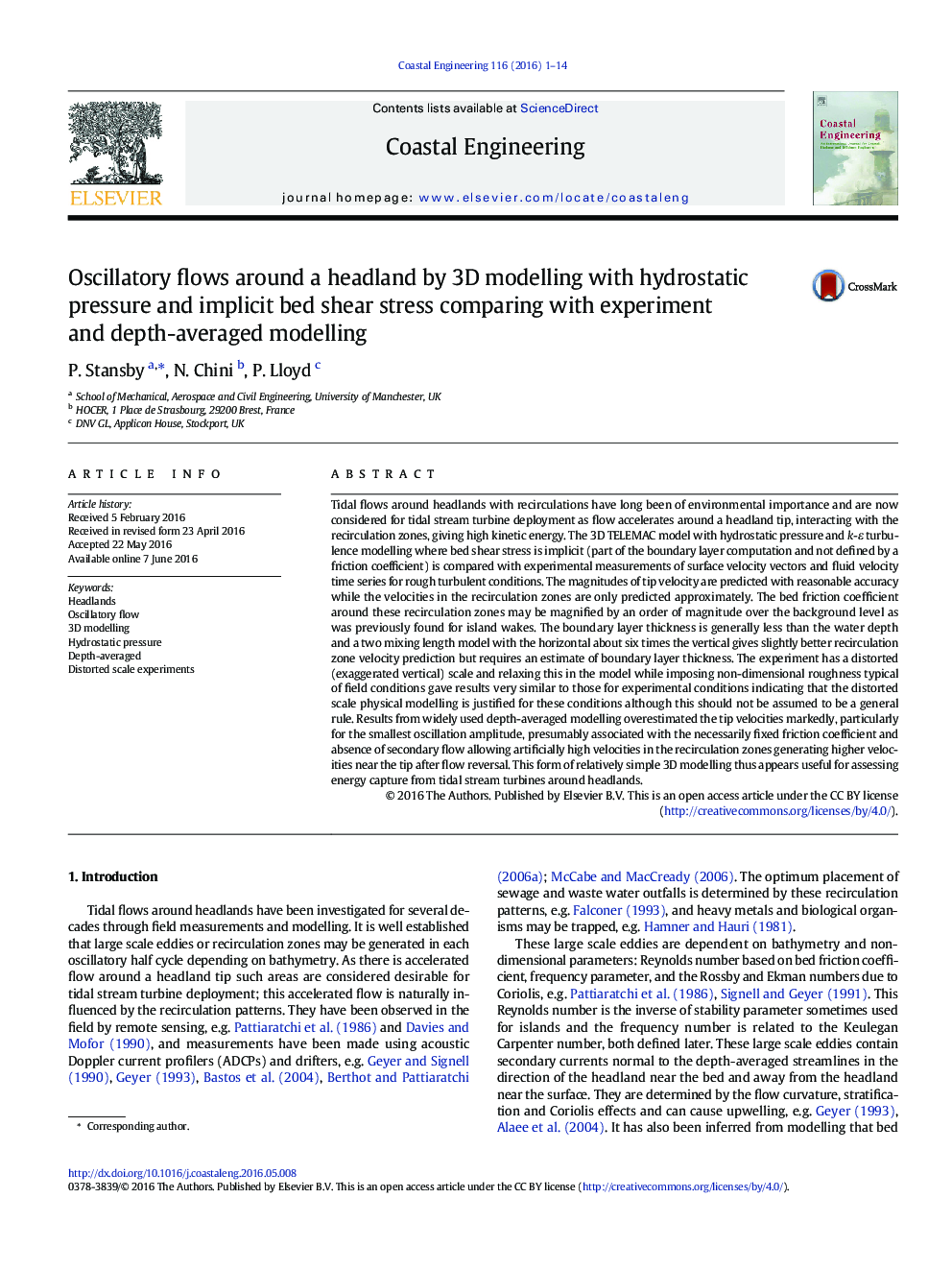| Article ID | Journal | Published Year | Pages | File Type |
|---|---|---|---|---|
| 8059638 | Coastal Engineering | 2016 | 14 Pages |
Abstract
Tidal flows around headlands with recirculations have long been of environmental importance and are now considered for tidal stream turbine deployment as flow accelerates around a headland tip, interacting with the recirculation zones, giving high kinetic energy. The 3D TELEMAC model with hydrostatic pressure and k-ε turbulence modelling where bed shear stress is implicit (part of the boundary layer computation and not defined by a friction coefficient) is compared with experimental measurements of surface velocity vectors and fluid velocity time series for rough turbulent conditions. The magnitudes of tip velocity are predicted with reasonable accuracy while the velocities in the recirculation zones are only predicted approximately. The bed friction coefficient around these recirculation zones may be magnified by an order of magnitude over the background level as was previously found for island wakes. The boundary layer thickness is generally less than the water depth and a two mixing length model with the horizontal about six times the vertical gives slightly better recirculation zone velocity prediction but requires an estimate of boundary layer thickness. The experiment has a distorted (exaggerated vertical) scale and relaxing this in the model while imposing non-dimensional roughness typical of field conditions gave results very similar to those for experimental conditions indicating that the distorted scale physical modelling is justified for these conditions although this should not be assumed to be a general rule. Results from widely used depth-averaged modelling overestimated the tip velocities markedly, particularly for the smallest oscillation amplitude, presumably associated with the necessarily fixed friction coefficient and absence of secondary flow allowing artificially high velocities in the recirculation zones generating higher velocities near the tip after flow reversal. This form of relatively simple 3D modelling thus appears useful for assessing energy capture from tidal stream turbines around headlands.
Related Topics
Physical Sciences and Engineering
Engineering
Ocean Engineering
Authors
P. Stansby, N. Chini, P. Lloyd,
